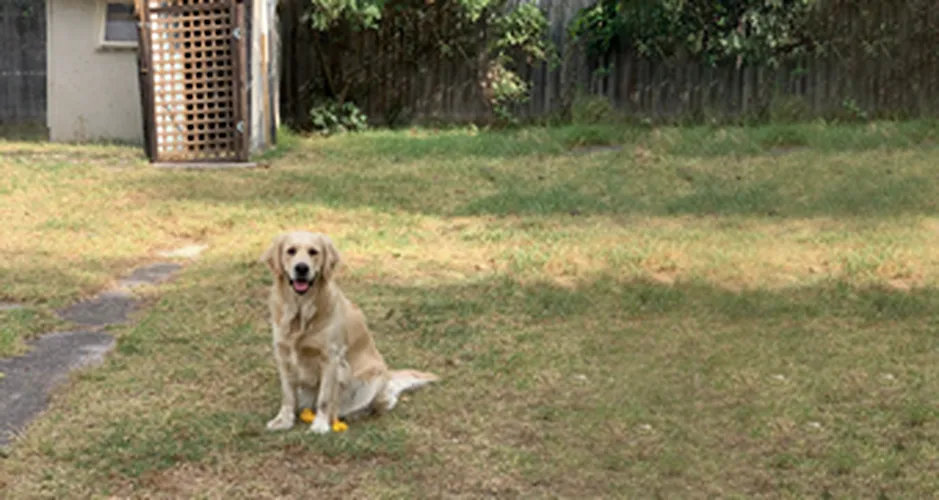As strata managers, you are probably aware that pet issues are one of the top three issues in community living. We Australians love our pets, and with one of the highest recorded numbers of pet owners in the world, it’s no wonder that this is a controversial issue.
Resolving pet issues in a strata scheme requires clear communication between the pet owner and owners corporation, and an understanding of the laws. In this blog, we’ll highlight some of the issues with keeping pets in strata schemes and how to resolve pet-related issues in your building.
Understanding Strata and Pet Ownership
Can you have pets in strata buildings? That’s the question we often get asked by owners corporations and lot owners. Well, the answer is this – it depends.
In Victoria, strata residents are allowed to keep a pet without seeking approval. This is different from states like South Australia and Queensland, where lot owners must get the permission of the owners corporation before they can bring a pet into the building.
However, if the animal is a nuisance to the resident or poses a threat to others, then the owners corporation has the right to ask the pet owner to remove the animal from the building. Additionally, the owners corporation can also create their own by-laws with a no-pet rule, which must be approved by Land Victoria.
If renters are in the picture, then a renter must seek permission from the lot owner to have a pet in the house.
But what exactly is the issue with keeping pets in strata schemes? Let’s look at some of the common ones.
Common Pet-Related Issues in Strata Schemes
While the joy of keeping pets is immeasurable, it does come with complications in a strata with shared common spaces. Here are some of the issues we usually see (and mediate) as strata managers
- Pets in common areas: Not everyone loves having pets around, and some residents may feel uncomfortable having pets in common areas such as the pool and gym.
- Understanding strata by-laws: Many residents overlook the strata by-laws unintentionally. Especially if a resident is migrating from interstate, it’s common for them to bring a pet into a ‘no pet’ building.
- Messy pets: Unfortunately, we’ve seen many complaints of pet owners leaving a mess in common areas. This affects the cleanliness and aesthetics of the premises, and it’s not allowed in any case.
- Noise and disruptions: Noise from pets is disruptive and intrusive to other residents’ well-being and is a prevalent cause of complaints for pets in strata.
- Navigating ‘no-pets’ by-laws: The no-pets by-laws can often be misinterpreted and (sometimes intentionally) overlooked. These laws are even more blurred in the case of support animals.
How To Address Pet-Related Issues in Your Strata
Handling pet-related issues can be challenging, but with the right strategies and a level head, you can resolve the issue without escalation. Here are some strategies your owners corporation could take to address and resolve these issues.
Review the rules
If the owners corporation does not have special or registered rules, then you should refer to the existing model rules for your state. You should familiarise yourself with the specific rules and regulations regarding pets in your strata as stated by the strata by-laws.
In the example of Victoria, the model rules 4.1(4) and 4.1(5) outline that if a pet is determined to be a nuisance or danger by the owners corporation committee, then they must resolve it by asking the pet owner to remove the pet from the premises.
Open dialogue
Most pet-related issues can be resolved through open communication and compromise between residents. If a resident expresses a concern regarding a pet, suggest for them to respectfully start an initial conversation with the pet owner. They could explain their concerns to the pet owner and try to find a mutually acceptable solution together.
If the issue isn’t resolved, the owners corporation can speak with the pet owner directly – providing sufficient proof of the pet issue and details of the resident’s complaints. Alternatively, you could also mediate the initial conversation between the pet owner and the residents.
Follow appropriate channels
While closing the issue in the steps above is ideal, we understand that some complaints aren’t resolved as quickly. If the issue remains, it may be necessary to follow the formal complaint process under section 52 of the Owners Corporations Act 2006 (OC Act).
Residents with a complaint should fill up the approved complaint form on the Victoria Consumer Affairs website and submit it to the grievance committee or the strata manager. Doing this provides relevant parties with formal, specific details about the issue and related evidence.
Organise a dispute resolution meeting
The owners corporation should also consider involving a neutral third party in a dispute resolution meeting. This could be done by a professional mediator or a committee member.
Having a neutral external party can help facilitate discussions between everyone involved and work towards finding a resolution that satisfies all parties. Remember that the goal is to look for a win-win resolution.
Attend dispute resolution meeting
Both the complainant and the alleged offender should be encouraged to participate in the dispute resolution meeting. Remind them that the meeting provides an avenue to express their concerns, listen to others, and work towards finding consensus on resolving pet-related issues in the community.
After the meeting is held, the grievance committee must determine if the matter is resolved or if the owners corporation will take further action on the matter. A notice of decision must be sent to all parties, even if the grievance committee decides not to take it further. Regardless of the action, it must report the same at the next annual general meeting.
Issue breach notice
Unfortunately in some cases, unresolved pet issues may require legal intervention. For example, if the committee has asked a pet owner to remove their pet from the premises and they haven’t done so within the time frame, then the committee can enforce this by issuing a notice to rectify breach form.
If the pet owner continues to breach the rules, a final notice to rectify breach can be sent, followed by passing an ordinary resolution if it continues. All forms can be found on the Victorian Consumer Affairs website.
Key Takeaway
In conclusion, keeping pets in strata schemes can be tricky, but with the right steps and a clear understanding of strata by-laws, you can resolve the issue with all parties satisfied. Open communication and responsible pet ownership are also key to a harmonious shared living space, so addressing every issue with empathy and professionalism is important.
At Australia Strata Management, we understand the complexities of strata, including navigating the responsibilities of pet ownership. With over 30 years in the business, we aim to help all owners corporations maintain an efficient property that benefits all its residents.
For a no-obligation consultation about our property management services, contact our team today.


